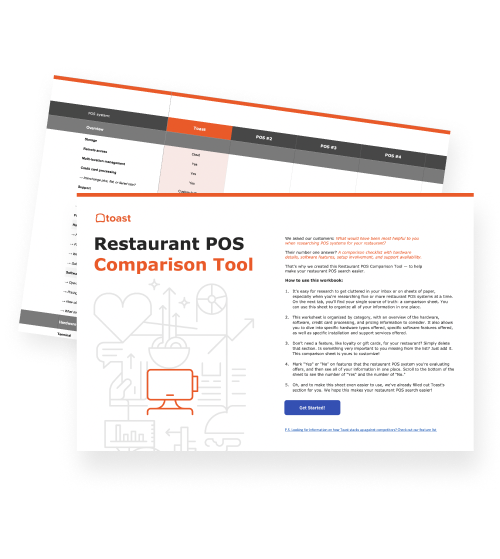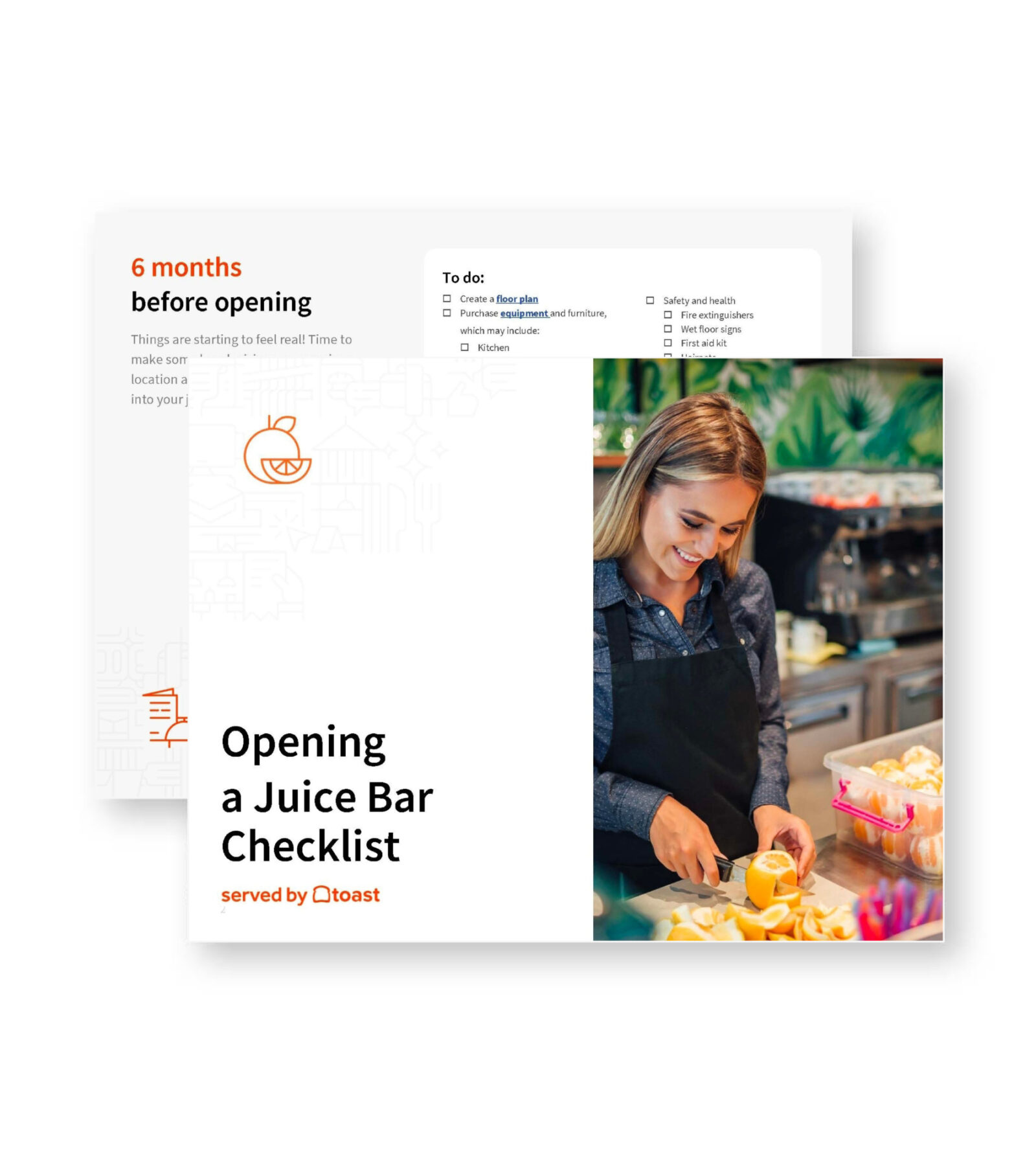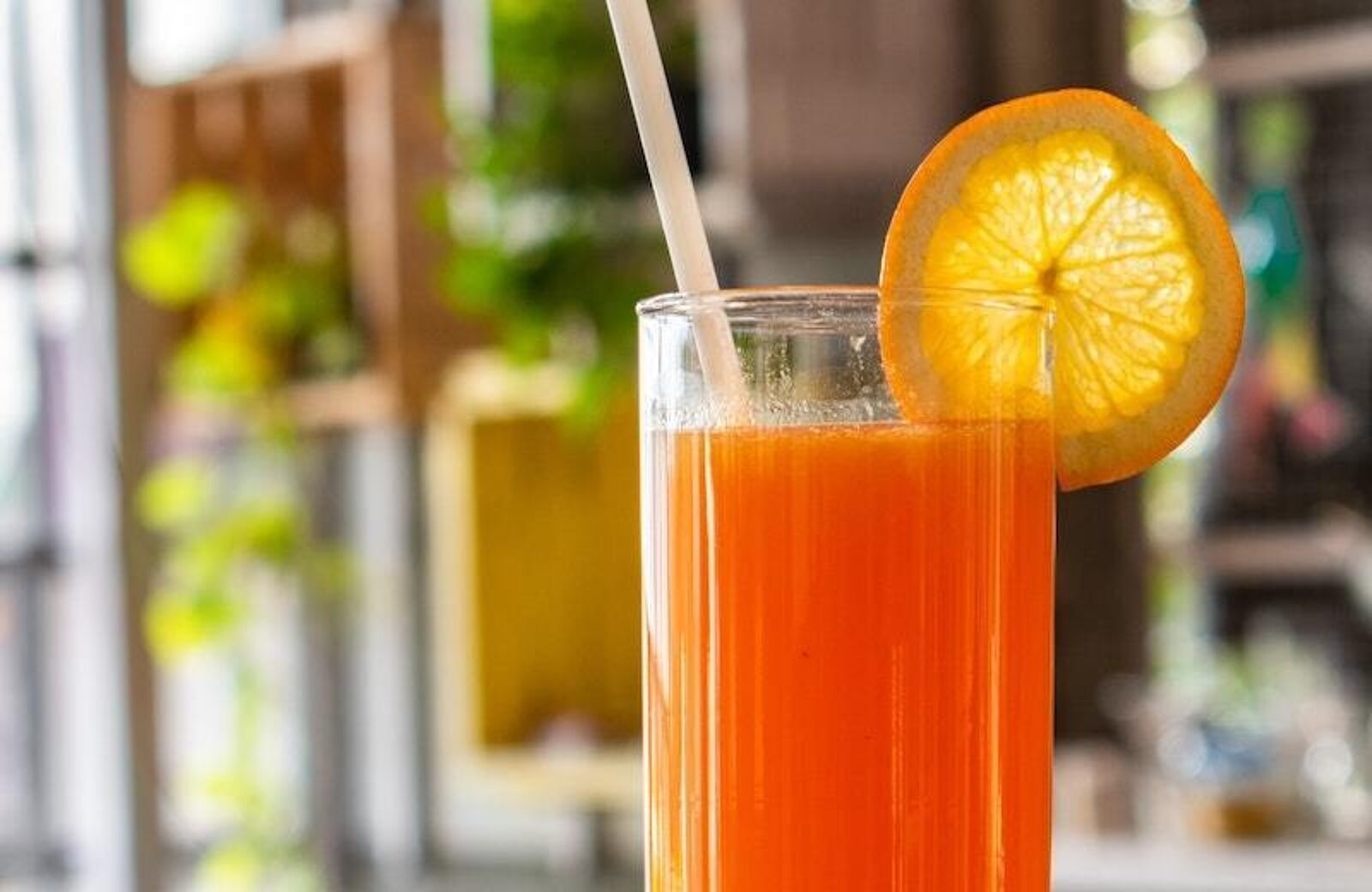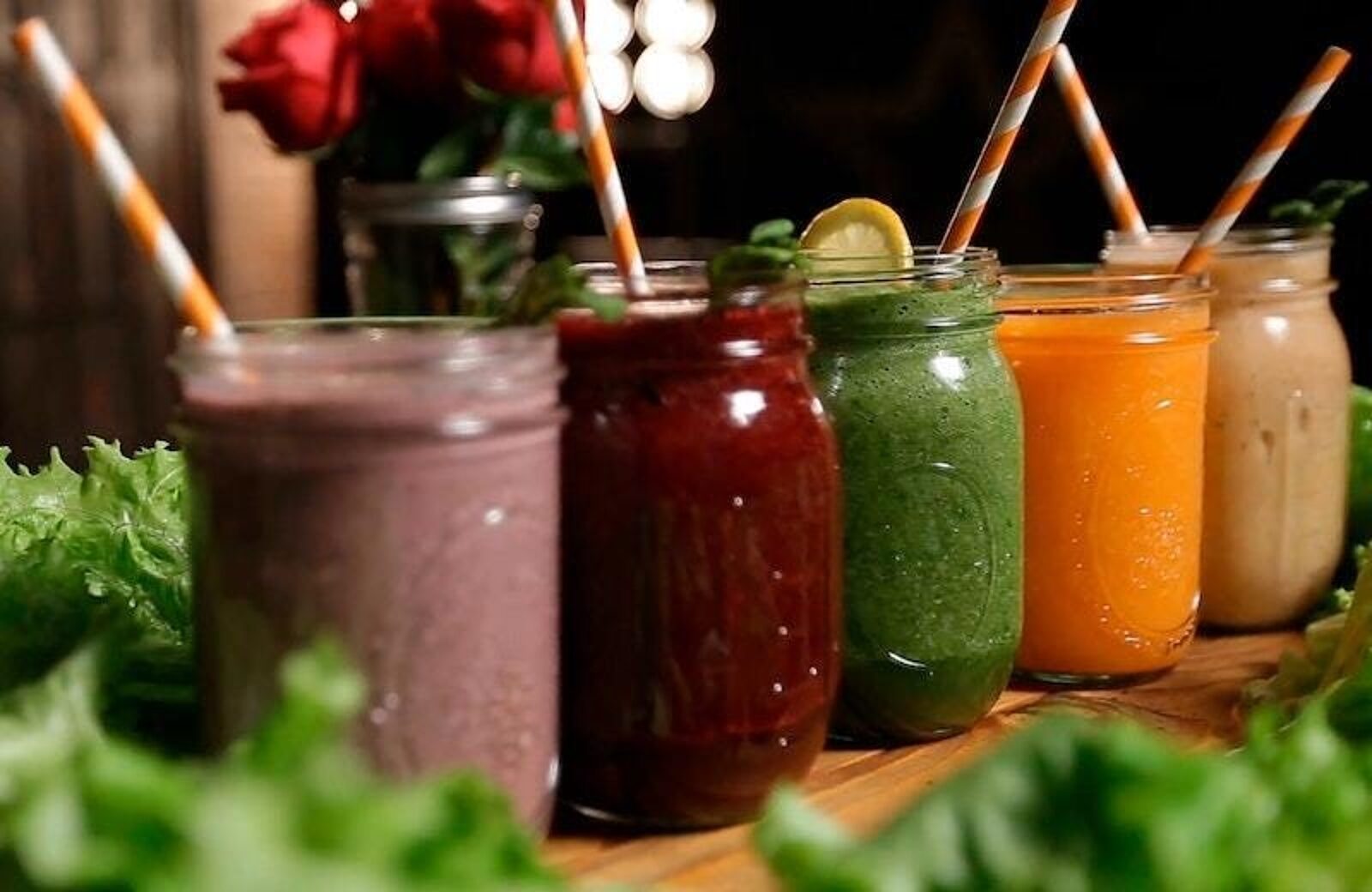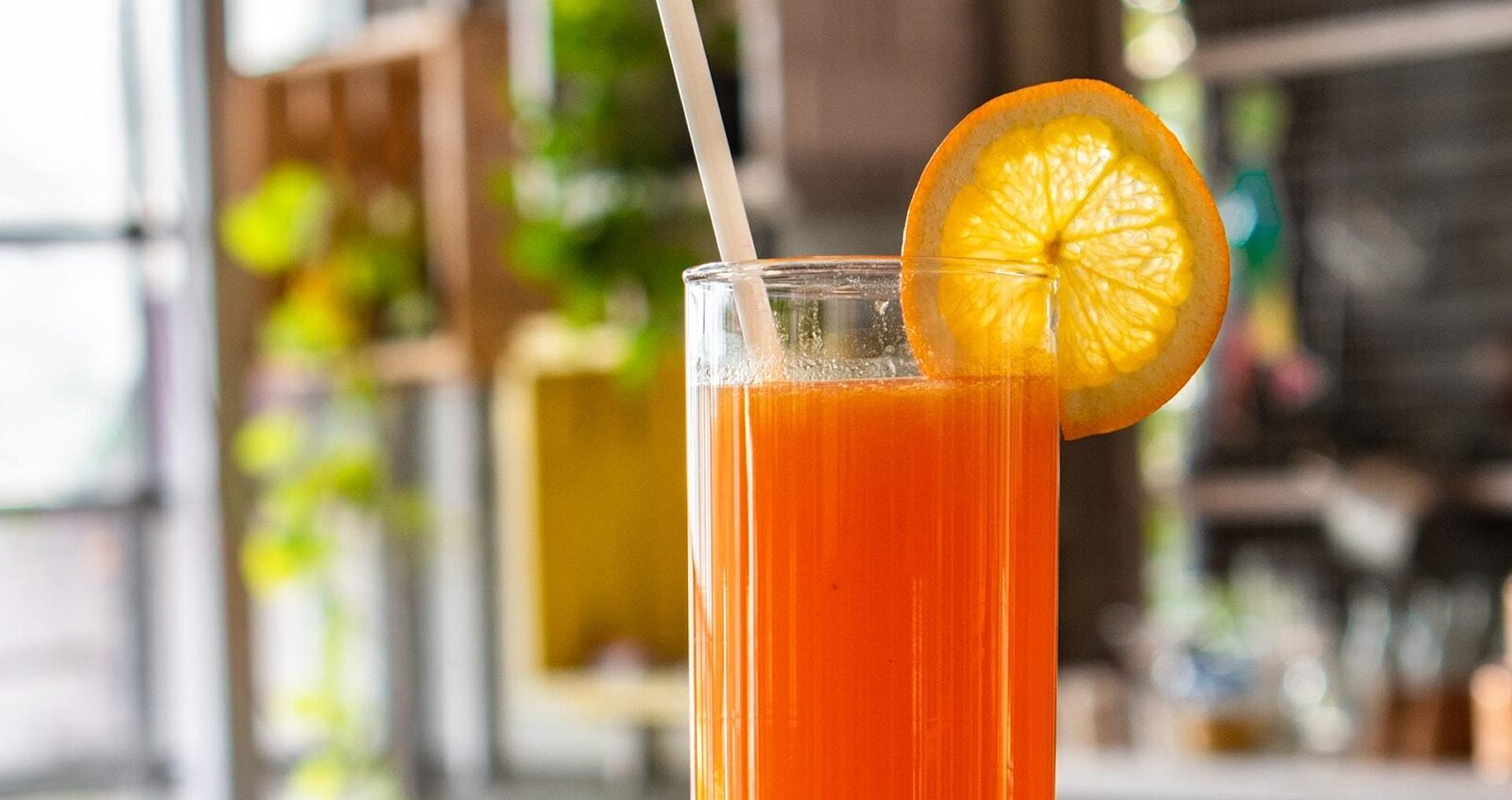
Here’s Every Bit of Juice Bar Equipment You Need
Starting a juice bar is a thrilling and potentially rewarding investment. Set your juice bar up for success with this ultimate equipment guide.
Tyler MartinezAuthor


Restaurant POS Comparison Tool
A free, customizable Restaurant POS Comparison Tool to research and compare point of sale systems in one Excel spreadsheet.
Get free downloadEssential Juice Bar Equipment List (Appliances, Tools, Essentials)
Making fresh juices and smoothies require equipment like powerful commercial blenders that can liquefy frozen fruit and veg, as well as cold presses that’ll squeeze the nutrients out of any plant.
As part of your business plan, consider what’s essential for your operations, and budget for the costs of the restaurant equipment you need.
Restaurant Business Plan Template
No matter where you’re at in your restaurant ownership journey, a business plan will be your north star. Organize your vision and ensure that nothing is overlooked with this free template.

What Equipment Do You Need In a Juice Bar
Here’s a starting list of the equipment you’ll need to start a juice bar:
- Blenders
- Juicers & Cold Presses
- Freezers and Refrigerators
- Ovens, Grills, and Ranges
- Ventilation
- Microwaves
- Food Prep Surfaces
- Food Prep Equipment
Knives
Cutting boards
Pots and pans
Food processors
Mixers
Storage containers and shelving
- Safety Equipment
Gloves
First aid kit
Date labels
Sani-buckets
Bar rags
Food grade cleaning supplies
Chemical safety data sheets
- Sinks
- Compartment sinks
- Disposal sinks
- Handwashing sinks
- Restaurant Point of Sale System
- Kitchen Display System (KDS)
- Serviceware
- Display cases
- Table service essentials
- Paper boats, plates, or clamshells
- Utensils
- Napkins or linen
How Much is Equipment for a Juice Bar?
This depends on factors such as location and scale. Because there are so many different types of juice bars, the average juice bar startup cost falls within a wide range of $25,000 to $400,000. To keep your budget in check, it can be helpful to explore restaurant financing options.
Things to Consider before Buying Juice Bar Equipment
As with any restaurant, the equipment you purchase for your juice bar is one of the most important investments you’ll make. Decide which blenders are perfect for your shop and spare no expense on refrigerators and freezers for fresh ingredients.
1. Quality
The quality of your equipment is directly related to the quality of the product you’ll serve – commercial blenders and cold presses simply get the job done better than models made for your home countertop. Select durable equipment, and research before making any major decisions. Consider who’ll maintain the equipment and their capability when it comes to repairing those pieces.
2. Space
Commercial kitchen equipment is large and bulky because of how powerful it is. Don’t underestimate the amount of space it’ll occupy in your bar and kitchen.
3. Planning your Kitchen
Consider consulting a kitchen planner for advice on the layout of your kitchen and bar, so it’ll be comfortable for your employees and appealing to your customers.
4. Use and Cleaning
Some kitchen equipment will last a lifetime if maintained properly. Consider selecting equipment for how easy it is to repair. Train your staff to clean equipment properly so that it stays in top condition. Look out for the NSF symbol on food equipment which ensures that it meets food safety certification standards.
5. Suppliers
Quality equipment is critical to the success of your donut shop, and building a rapport with your equipment supplier is a good idea. Many towns and cities have local restaurant supply stores that, for a membership fee, offer premium ranges of commercial equipment at near wholesale prices. The best suppliers will be honest about the condition of the products they sell and provide everything you need – including installation, maintenance, and repairs.
Sourcing Restaurant Equipment
Once you have a comprehensive list and a vision of your fully-equipped juice bar, start shopping around. Local restaurant wholesalers often have good deals. You can also lease from a reputable online retailer, or rent equipment until you can afford to invest.
New vs. Used Equipment
Some expensive (and essential) pieces of equipment might actually be better to purchase used. Consider looking for an oven or deep freezer that has been well maintained over the years.
6. Pricing
Prioritize the machines that you’ll rely on most for your juice bar, like blenders and juicers. If you need to compromise, do so on the less equipment less central to your business model.
7. Financing or Leasing
Financing or leasing equipment allow you to take on less risk until you’re sure your business will succeed. Lease payments can be tax-deductible just like equipment purchases and allow you to be financially liquid as you open your juice bar.
Ultimate Juice Bar Equipment Checklist
1. Blenders
Commercial blenders are one of the central pieces of equipment in a juice bar. It’s important to do research on brands’ durability, price, and specifications and make an informed investment. Liquefying frozen fruits and ice takes a toll on small motors – learn how to repair blenders to keep them in top shape or contact a specialty repair person.
2. Juicers & Cold Presses
Juicers and cold presses produce a similar product but use different processes. Commercial juicers use a metal blade and mesh filter to grind fruits and vegetables. And they separate liquids from solids with the centrifugal force of the machine. Cold press juicers use powerful hydraulic pressure to squeeze water, oils, and nutrients from fruits and veggies. Cold presses are more expensive, but they extract more nutrients from the plants. Centrifugal juicers add heat to the process from the force of the blade; something that’s avoided with a cold press.
3. Freezers and Refrigerators
Storing all that fresh produce requires lots of cold space. Freezers and refrigerators are a primary investment for any restaurant business model. Consider if your juice bar will have enough volume to require a walk-in cooler that simplifies organization. Commercial refrigeration units can be long-lasting durable pieces – be sure to train your staff on cleaning and maintenance.
Ice Maker
An ice maker is essential for making iced coffees and serving cold juices and smoothies. Purchase a durable, commercial grade machine that will produce enough ice to keep up with the demand of your shop. Clean and maintain your ice maker, and avoid contaminating it with spilled liquid or broken glassware.
4. Ovens, Grills, and Ranges
While not a central concern for a juice bar or smoothie shop, investing in an oven, grill or other cooking surface allows you to complement juices with hot sandwiches, wraps, and salads.
Convection ovens circulate heat, to ensure your baked goods cook quickly and consistently. Combination ovens circulate heat and create steam, perfect for baking crusty bread or steam-roasting vegetables and aromatics.
Induction burners generate an electromagnetic current to heat a surface. Magnetic metals transfer heat the best, and can be used to heat glass or other surfaces. Induction is a sustainable, versatile, space-conscious, and cost-effective option, especially if your menu won’t require multiple burners.
5. Ventilation
Kitchens require ventilation, so they don’t get filled with the heat and smoke from ovens and ranges. Ensure that your ventilation system has enough power to provide a safe kitchen environment.
6. Microwaves
Juice bars often rely on microwaves for their simple menus.
7. Food Prep Surfaces
When planning the layout of your juice bar, provide enough clear counter space for your employees to work. Consider how many employees will be in the kitchen and how much space is needed for production.
Stainless steel prep counters are classic in kitchens because they are easy to sanitize and won’t transfer unwanted heat to products. Poured concrete is a cost-effective alternative and just as durable, or you might select wood or granite.
8. Food Prep Equipment
Don’t forget small appliances, utensils, mixing bowls, microplanes, and more!
Knives
A good chef and her knife move as one. Invest in a set of knives and learn how to keep them sharp for both safety and efficiency. You’ll also want a sharpening stone to keep your investment in good condition.
Cutting boards
Quality cutting boards make a noticeable difference in the prep experience. Favorites include boards with lips around the edges to keep liquid contained, or boards with handles for easy maneuvering.
Pots and pans
Choose quality pieces that will become assets to your kitchen. Pots and pans are essentials that last a long time when maintained properly.
Food processors
Food processors are great for liquefying soups and sauces, and ensuring you get an even chop or mince.
Mixers
If you plan to offer baked goods, mixers take the hard work out of preparing large batches of batter.
Storage containers and shelving
Storage is always a must for safety and organization. Arrange ingredients for certain dishes or drinks near the spaces where they’ll be prepared.
Etc.
This is probably the most important category – the rest. The little things add up, so it’s crucial to plan and budget for them. Certain tiny items are easily misplaced, so buy backups.
11. Safety Equipment
All restaurants are held to food safety standards and must have certain equipment on hand, such as:
- Gloves
- First aid kits
- Date labels
- Sani-buckets
- Bar rags
- Food grade cleaning supplies
- Chemical safety data sheets
12. Sinks
Sinks are necessary for prep, cleaning, and disposal. You’ll need to equip both your bar and kitchen with sinks.
Compartment sinks
Three compartment sinks are generally needed to meet food safety standards for washing and sanitizing.
Disposal sinks
Disposal sinks, also often called bar sinks, are conveniently located to catch any liquid that needs to be discarded.
Handwashing sink
Dedicated handwashing sinks must be available for employees so they can maintain safe food handling standards.
Crucially, POS systems provide a way to integrate inventory management, budgets, sales reports, and communication between the front- and back-of-house operations. Keep everything running smoothly with cutting edge interfaces.
Restaurant POS Comparison Tool
A free, customizable Restaurant POS Comparison Tool to research and compare point of sale systems in one Excel spreadsheet.

14. Kitchen Display System (KDS)
Kitchen display systems let your cooks know what customers are ordering in real time. Your KDS sends orders to cooks from cashiers. They’re integrated with your shop’s point-of-sale system to keep everything in order and maintain smooth, efficient service.
15. Serviceware
Juice bars are often grab-and-go affairs. That’s why you’ll need to consider the following:
Takeout cups
Your primary product is juice and smoothies, so you’ll need to make the right decision on takeout cups. Paper, plastic, or Styrofoam? Cups, lids, and straws are also surprisingly expensive. Make a choice that works for your brand and budget.
Paper boats, plates, or clamshells
Necessary for grab-and-go or take-out services, this single-use servicewear is an expensive cost of operating a restaurant or café.
Takeout utensils
Single-use utensils are surprisingly expensive for restaurants and cafes – plastic cutlery adds up. Save money by asking each customer whether or not they need utensils.
Napkins or linen
You’ll need to budget for these essentials, so your customers and employees can clean themselves up.
Related Juice Bar Resources
Restaurant Opening Calculator
This calculator lays out some of the fundamental financial costs of opening a restaurant, so you can start planning and bring your dream restaurant to life.

Is this article helpful?
DISCLAIMER: This information is provided for general informational purposes only, and publication does not constitute an endorsement. Toast does not warrant the accuracy or completeness of any information, text, graphics, links, or other items contained within this content. Toast does not guarantee you will achieve any specific results if you follow any advice herein. It may be advisable for you to consult with a professional such as a lawyer, accountant, or business advisor for advice specific to your situation.
Read More
Subscribe to On the Line
Sign up to get industry intel, advice, tools, and honest takes from real people tackling their restaurants’ greatest challenges.
